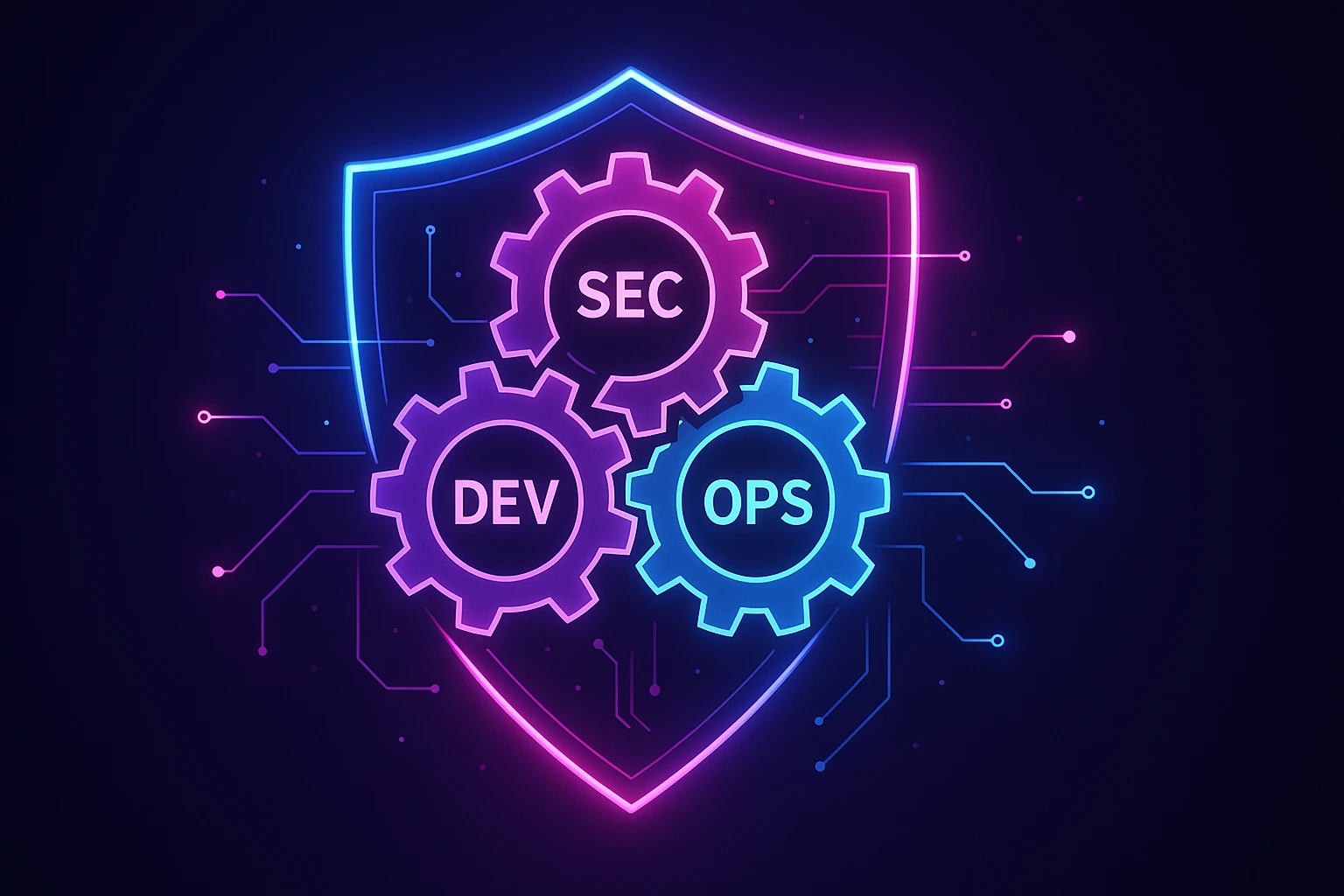Payment card fraud costs businesses $33.79 billion annually, and most companies don’t realize their compliance gaps until it’s too late. For enterprise teams managing payment data in Salesforce, PCI compliance represents important protection against breaches, fines, and reputational damage.
Understanding what PCI compliance really means and how it applies to your Salesforce environment helps you avoid these costly surprises while building a safer foundation for digital payments.
What Is PCI Compliance?
PCI compliance means following the Payment Card Industry Data Security Standards (PCI DSS), a global framework that governs how businesses store, process, and transmit payment card information. Beyond regulatory requirements, PCI DSS establishes the security baseline for protecting customer payment data from theft or unauthorized access—protections that reduce operational risk, improve customer confidence, and often streamline broader security initiatives.
The standard was introduced in 2004 when major card networks, such as Visa, Mastercard, American Express, Discover, and JCB, formed the PCI Security Standards Council to address rising fraud losses and inconsistent security practices across the payment ecosystem.
Their goal was to create a unified standard that applies to anyone handling cardholder data, whether you’re a retailer, cloud platform, or SaaS provider. This includes critical data such as account numbers, expiration dates, cardholder names, and service codes.
If your organization interacts with this kind of data, even indirectly, you’re within the scope of PCI DSS. This includes global enterprises, small businesses, cloud platforms such as Salesforce, and third-party vendors that can impact data security.
The standard has evolved to address new threats and technologies. Today, PCI DSS reflects the realities of cloud computing, integrated payments, and digital platforms, without changing its core purpose: to protect sensitive payment data everywhere it lives.
Who Needs to Be PCI Compliant?
The Payment Card Industry Data Security Standard applies to every entity that stores, processes, or transmits cardholder information, regardless of size, transaction volume, or industry. Processing five transactions a year triggers the same basic security requirements as processing five million.
- Teams using Salesforce to process or store payment data fall into scope if your Salesforce instance connects to a payment processor or stores billing preferences in custom objects. Salesforce's infrastructure may be secure, but you control the access, handling, and configuration of that data. Your customizations, integrations, and user management decisions directly impact compliance.
- Third-party vendors that touch cardholder data must also follow PCI guidelines. Any external service or integration that can impact data security—payment processors, middleware tools, backup platforms, or analytics services—carries compliance requirements. Their compliance doesn't remove your responsibility; it adds another layer you must verify and monitor.
- Organizations operating under shared responsibility models remain accountable even when outsourcing payment infrastructure. Your team is still responsible for user access, system monitoring, and securing customizations in Salesforce. This shared model often creates compliance gaps when teams assume their cloud provider handles everything.
PCI Compliance Levels and Validation Requirements
PCI DSS assigns organizations to compliance levels based on annual transaction volume, not company size or revenue. Each level carries different validation requirements and costs:
Level 1: Over Six Million Transactions Annually
The most rigorous tier applies to the largest merchants and any organization that has suffered a breach, regardless of transaction volume.
- Annual on-site audit by a Qualified Security Assessor (QSA)
- Quarterly vulnerability scans by an Approved Scanning Vendor (ASV)
- Full Report on Compliance (ROC) submitted to acquiring banks
Level 2: One to Six Million Transactions Annually
Mid-sized enterprises processing millions of transactions face significant but more manageable requirements.
- Annual Self-Assessment Questionnaire (SAQ)
- Quarterly vulnerability scans
- On-site audit may be required depending on your acquiring bank
Level 3: 20,000 to 1 Million E-commerce Transactions
Smaller merchants with primarily online payment volume have lighter validation requirements.
- Annual SAQ
- Quarterly network scans
- No routine on-site audit unless requested
Level 4: Under 20,000 E-commerce Transactions or 1 Million Total
The smallest businesses have minimal validation requirements but full compliance obligations.
- Annual SAQ
- Quarterly scans, depending on processor policy
PCI DSS Requirements and Implementation Framework
The PCI DSS framework consists of 12 requirements organized into six core objectives. Understanding these requirements allows you to build a comprehensive security strategy that protects payment card data while maintaining operational efficiency in your Salesforce environment.
1. Build and Maintain Secure Network and Systems
Your network architecture represents the first line of defense against unauthorized access to cardholder data. These foundational requirements establish the security perimeter that protects sensitive information from external threats while ensuring legitimate business operations can continue seamlessly.
In cloud environments like Salesforce, network security takes on new dimensions—you're not just protecting physical infrastructure, but also managing API endpoints, integration points, and user access patterns that can create vulnerabilities if misconfigured. The goal isn't to create an impenetrable fortress, but rather to build intelligent barriers that allow authorized access while blocking malicious activity.
Network security forms your compliance foundation through two key requirements:
Requirement 1: Firewall Configuration
Firewalls create barriers between trusted internal networks and untrusted external ones. In Salesforce environments, this translates to configuring IP restrictions, managing API access, and securing integration endpoints.
Requirement 2: Eliminate Vendor Defaults
Remove vendor-supplied defaults for system passwords and security parameters. For Salesforce implementations:
- Customize default user profiles with appropriate restrictions
- Change standard security settings to match your risk tolerance
- Configure integration points with external systems using unique credentials
- Implement strong password policies that exceed platform defaults
Operational Maintenance: Apply Salesforce updates and package patches on a fixed cadence. Audit third-party integrations quarterly for vulnerabilities or deprecated code. Retire unused apps and revoke stale permissions during regular access reviews.
2. Protect Cardholder Data
At the heart of PCI compliance lies the fundamental principle that cardholder data must be protected wherever it exists—in storage, during processing, and while being transmitted between systems. This isn't just about meeting regulatory requirements; it's about maintaining the trust that customers place in your organization when they share their payment information.
Data protection failures can expose organizations to massive financial losses, regulatory penalties, and long-term reputational damage that extends far beyond the immediate incident. The challenge in Salesforce environments is ensuring protection while maintaining the platform's flexibility and user experience that drive business value.
Data protection addresses both storage and transmission through encryption, truncation, masking, or hashing.
Requirement 3: Protect Stored Data
Implement field-level encryption for sensitive data fields in Salesforce. Use Salesforce Shield Platform Encryption or equivalent solutions to protect data at rest.
Requirement 4: Encrypt Data in Transit
Ensure API connections and data integrations use secure transmission protocols (TLS 1.2 or higher). Configure Salesforce to reject unencrypted connections.
Operational Maintenance: Automate encrypted backups for all PCI-scope objects using solutions that maintain encryption during backup and restore processes. Test restore procedures regularly to ensure backup validity and encryption integrity.
3. Maintain a Vulnerability Management Program
Security threats evolve constantly, with new vulnerabilities discovered daily and attack methods becoming increasingly sophisticated. What's secure today may be compromised tomorrow, making ongoing vulnerability management essential rather than optional.
The challenge isn't just identifying vulnerabilities—it's maintaining visibility across your entire technology stack while balancing security needs with operational requirements. In Salesforce environments, this extends beyond the platform itself to include custom code, third-party integrations, and connected systems that could serve as entry points for attackers seeking cardholder data.
Ongoing security maintenance prevents known vulnerabilities from becoming breach vectors.
Requirement 5: Anti-Virus Protection
Deploy current anti-virus software on systems commonly affected by malware. While Salesforce handles infrastructure protection, ensure any connected systems or workstations accessing cardholder data maintain updated protection.
Requirement 6: Secure Systems and Applications
Keep custom applications secure through regular code reviews, prompt security patch application, and secure development practices for custom integrations.
Operational Maintenance: Implement continuous security monitoring for custom code and third-party packages. Establish secure development lifecycle practices that include security reviews before deploying changes to production environments.
4. Implement Strong Access Control Measures
The principle of least privilege access forms the backbone of effective data security, ensuring that individuals can access only the information and systems necessary to perform their job functions. In practice, this means creating sophisticated access control systems that balance security with usability, preventing both unauthorized access and operational friction that could drive users toward workarounds.
The complexity increases in Salesforce environments where role hierarchies, permission sets, and sharing rules must work together to protect cardholder data while enabling collaboration. Poorly implemented access controls represent one of the most common sources of PCI compliance failures and data breaches.
Access control requirements govern who can access cardholder data and how they authenticate.
Requirement 7: Restrict Access by Business Need-to-Know
Implement role-based access controls that limit cardholder data access to employees whose job functions require it. In Salesforce, use permission sets and profiles to create granular access controls.
Requirement 8: Unique User Identification
Assign unique IDs to each person with computer access. Provide each user with unique login credentials and implement multi-factor authentication for all accounts with access to cardholder data.
Requirement 9: Restrict Physical Access
While Salesforce handles physical infrastructure security, ensure workstations and mobile devices accessing cardholder data have appropriate physical protections.
Operational Maintenance: Run quarterly access reviews for all Salesforce users. Remove permissions for inactive users or those with changed roles. Implement automated provisioning and deprovisioning processes tied to HR systems. Carefully manage permissions for custom objects containing payment information through regular audits.
5. Monitor and Test Networks Regularly
Implementing security controls is only half the battle—proving they work effectively over time requires continuous monitoring and regular testing. Even the most sophisticated security measures can fail silently, leaving organizations exposed without their knowledge until a breach occurs.
The goal of monitoring isn't just to detect active threats, but to identify patterns that suggest potential vulnerabilities or control failures before they can be exploited. In dynamic environments like Salesforce, where configurations change frequently and new integrations are constantly being added, continuous monitoring becomes essential for maintaining security posture and compliance readiness.
Continuous monitoring ensures your security controls remain effective over time.
Requirement 10: Track and Monitor Access
Track and monitor all access to network resources and cardholder data. Implement comprehensive audit logging that captures user activity, system changes, and data access patterns.
Requirement 11: Regular Security Testing
Regularly test security systems and processes through vulnerability scans, penetration testing, and security assessments of your org configuration.
Operational Maintenance: Monitor for unusual login patterns, suspicious API traffic, or unauthorized access attempts. Flag and review critical system changes across environments. Implement real-time alerting for high-risk activities involving cardholder data.
6. Maintain an Information Security Policy
PCI's final requirement recognizes that sustainable compliance depends on creating a culture where security practices are understood, followed, and continuously improved by every team member. While requirements 1-11 focus on what you need to implement, requirement 12 addresses how you ensure those implementations remain effective over time through clear governance, accountability, and ongoing education.
Requirement 12: Information Security Policy
Establish a governance framework through policies that address information security for all personnel. This policy should define roles, responsibilities, and procedures for maintaining PCI compliance across your organization, including specific guidance for teams working with Salesforce data.
Operational Maintenance: Embed secure data handling into onboarding and ongoing enablement programs. Deliver regular training that focuses on how day-to-day Salesforce use impacts PCI scope. Update policies annually or when significant system changes occur.
PCI Compliance in Salesforce: Shared Responsibility Model
Moving to Salesforce shifts your PCI responsibilities without eliminating them. Under the shared responsibility model, Salesforce secures the infrastructure while your team manages everything tied to data access, handling, and configuration.
Salesforce Responsibilities:
- Physical infrastructure and data center security
- Network protections and platform-level security
- System patching and infrastructure maintenance
- Baseline platform security controls
Your Responsibilities:
- Encrypting sensitive fields and managing encryption keys
- Managing user access to cardholder data
- Monitoring user activity across your org
- Securing custom apps, integrations, and third-party tools
- Maintaining compliance documentation and evidence
- Training users on secure data handling practices
Your PCI requirements don't change—only how you meet them. You still need strong access controls, audit trails, encrypted storage, and regular security reviews. The difference is implementing those controls within the Salesforce framework rather than managing on-premises hardware.
Solutions like Flosum support these requirements by providing Composite Backup technology for encrypted, secure backups and targeted point-in-time restore capabilities for data integrity. Role-based access controls limit cardholder information to authorized personnel only, while automated audit logging tracks all system activity—creating compliance-ready documentation without manual overhead.
How to Integrate PCI Into Your Data Governance Strategy
PCI compliance delivers maximum value when integrated into your broader data governance strategy rather than treated as an isolated requirement. The core principles—data protection, access control, and activity monitoring—mirror the fundamentals of securing your entire Salesforce environment.
The controls you implement for PCI compliance extend benefits beyond regulatory requirements:
- Operational Efficiency: Standardized data handling processes reduce manual overhead and inconsistencies across teams. Role-based access controls streamline user management while reducing security risks.
- Risk Reduction: Encrypted backups, comprehensive monitoring, and regular access reviews protect against threats beyond payment card fraud. These controls help prevent data loss, unauthorized access, and operational disruptions.
- Audit Readiness: Comprehensive audit trails and documentation prepared for PCI assessments support other compliance requirements, including SOX, GDPR, and industry-specific regulations.
- Business Continuity: Automated backup and restore capabilities, change tracking, and monitoring systems improve resilience against both security incidents and operational failures.
When compliance becomes part of how your teams operate daily, it stops being a cost center and starts driving efficiency, trust, and sustainable growth. Organizations that integrate PCI requirements into their development lifecycle reduce compliance-related delays and improve overall security posture.
Flosum supports this compliance-by-design approach with a DevSecOps platform built for Salesforce. Automated backups, role-based access controls, and full audit visibility help maintain PCI readiness without slowing development velocity. With the right tools and strategic approach, PCI compliance becomes a foundation for growth rather than an obstacle to innovation.
Interested in learning more about how Flosum can help you maintain compliance? Connect with an expert today!
Thank you for subscribing








